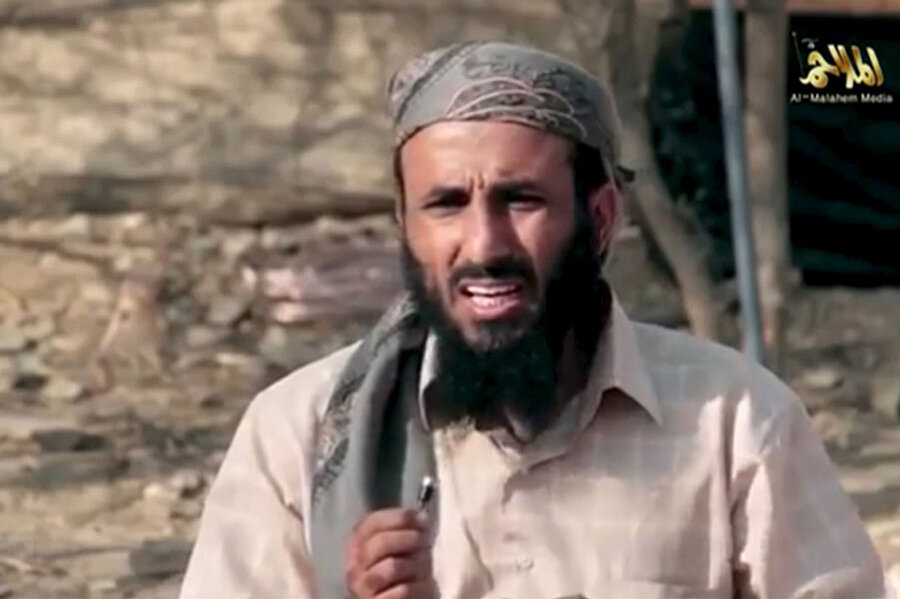US airpower takes out a bunch of Al Qaeda leaders. Effective warfare?
In the past few days the US killed Nasser al-Wuhayshi, Al Qaeda's second in command and leader of its powerful Yemen affiliate, and a group of Al Qaeda members gathered for a meeting west of Benghazi, Libya.
The main target of the Libya attack, near the city of Ajdabiya, was Mokhtar Belmokhtar, the Algerian chief of the Al Qaeda affiliate for North Africa. At this point it appears that Belmokhtar, a veteran of the Afghan jihad against the Soviets and leader of the 2013 attack on the Ain Amenas gas facility that murdered 35 civilians, may have escaped with his life.
If the US had killed Belmokhtar and Wuhayshi, that would make it two Al Qaeda heavy hitters down in as many days. But what of it? While clearly an intelligence and tactical success, there is little evidence that, a decade on, the US assassination campaign against jihadi leaders has done much to make the world a safer place.
In fact, the opposite could be argued. Yemen, which had been a major focus of the Obama administration's drone campaign, is now mired in a civil war that has helped Al Qaeda in the Arabian territory (AQAP) seize territory. And Libya has become a major haven for Al Qaeda and other jihadi groups like the Islamic State since NATO airpower helped topple dictator Muammar al-Qaddafi in 2011.
In Syria, Al Qaeda's local affiliate Jabhat al-Nusra is one of the strongest rebel groups, and has probably supplanted AQAP as the organizations most operationally dangerous branch. Syria and Iraq also host the Islamic State, which began life in 2003 as an Al Qaeda member but is now a rival. Pakistan's lawless and violent tribal areas, home to both Al Qaeda and Taliban members, remain lawless and violent after hundreds of US airstrikes dating back to 2004, that have killed an array of alleged Al Qaeda leaders and masterminds.
Correlation may not be causation but the US has killed dozens of senior Al Qaeda figures in six different countries over the past decade, and the problem with Islamist militancy in South Asia, North Africa, and the Middle East may be greater than ever. While it could be argued that killing senior figures disrupts potential plots against US interests – it also appears to make jihadi groups more violent and dangerous.
In 2006, there was "mission accomplished"-style US jubilation when Abu Musab Zarqawi, the leader of Al Qaeda in Iraq, was killed by a US airstrike. The Islamic State is now far stronger than Zarqawi's group could ever dream and controls large swathes of eastern Syria and Iraq. There was a similar reaction when Osama bin Laden was killed in 2011.
And now there's a bit of chest thumping over killing Wuhayshi. His death “strikes a major blow to AQAP, al-Qa’ida’s most dangerous affiliate, and to al-Qa’ida more broadly," National Security Council Spokesman Ned Price said in a statement today. "Wahishi’s death removes from the battlefield an experienced terrorist leader and brings us closer to degrading and ultimately defeating these groups."
Perhaps. Yet it could be argued that AQAP is in its strongest position since it was created in 2009. The group controls substantial territory in the war-torn country, and has also been capitalizing on the takeover of Sanaa, the capital, by the Shiite Houthi movement. The war between the Houthis and exiled leader Abed Mansour Rabbo Hadi, who has been backed by a Saudi Arabian bombing campaign, has created space for AQAP to seize more territory in Yemen and to make its sectarian pitch to the country's Sunnis.
Time will tell in the case of Wuhayshi. But it's inarguable that there has scarcely been a better time for jihadis to recruit and expand out of their strongholds since the US began its "targeted killing" campaign in Nov. 2002. The target then? Qaed Salim Sinan al-Harethi, whom US officials then described as Al Qaeda's "chief operative" in Yemen.






